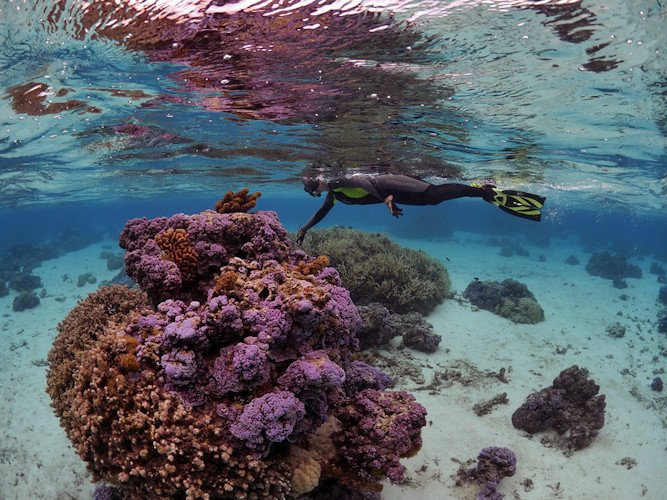OSU researchers find virus hidden in coral symbiont’s genetic material pose potential threat to reefs

CORVALLIS, Ore. (KTVZ) – Microscopic algae that corals need for survival harbor a common and possibly disease-causing virus in their genetic material, an international collaboration spearheaded by an Oregon State University researcher has found.
The study, co-led by researchers in the OSU College of Science, sheds new light on the threats faced by coral reefs, particularly as the climate changes.
Findings were published in Communications Biology.
Researchers probed the genomes of corals’ resident algae from samples collected during the 2016-18 Tara Pacific Expedition, a 100,000-kilometer scientific voyage that included more than 2,600 dives to study corals.
Corals are made up of interconnected animal hosts called polyps that house microscopic algae inside their cells. The coral-algal symbiosis, or partnership, is the foundation of the entire coral reef ecosystem; the polyps receive food from the algae, and the polyps in turn provide nutrients and protection to the algae.
Coral reefs are found in less than 1% of the ocean but are home to nearly one-quarter of all known marine species. They also help regulate the sea’s carbon dioxide levels and are a crucial hunting ground that scientists use in the search for new medicines.
Climate change is threatening the reefs in part because the symbiotic algae, dinoflagellates of the family Symbiodiniaceae, can be stressed by warming oceans to the point of dysbiosis – a collapse of the host-symbiont partnership, which results in a phenomenon known as coral bleaching.
Likewise, viral infection can threaten these algae and the stability of the symbiosis, said Kalia Bistolas, a postdoctoral scholar at Oregon State. Now scientists have one explanation for how these interactions might work.
“We found a very common RNA virus hidden within the genomes of coral symbionts,” said Bistolas, who co-led the study with Alex Veglia of Rice University and OSU's Rebecca Vega Thurber, who holds the Emile F. Pernot Distinguished Professorship in Microbiology.
What they discovered is a non-retroviral dinoflagellate-infecting +ssRNA virus referred to as dinoRNAV. Unlike retroviruses, non-retroviruses typically do not embed in a host’s genome.
Nearly all organisms carry remnants of past viral infections within their genomes, Bistolas said. Those remnants, known as endogenous viral elements, are like a historical record of the viruses encountered, and they can be passed from generation to generation.
“They are also like stealthy parasites,” she said. “Sometimes, when an organism is stressed, the viral genetic material can jump out of an organism’s genome and turn on its host. Finding a widespread RNA virus in an algal coral symbiont illustrates the need to categorize these hidden viruses in threatened ecosystems and also demonstrates one pathway through which changing environmental stressors – for example, climate change – could cause disease in corals.”
The Tara Ocean Foundation and the National Science Foundation supported this research, which also included scientists from the University of Maine and multiple international universities and laboratories.
About the OSU College of Science: As one of the largest academic units at OSU, the College of Science has seven departments and 12 pre-professional programs. It provides the basic science courses essential to the education of every OSU student, builds future leaders in science, and its faculty are international leaders in scientific research.